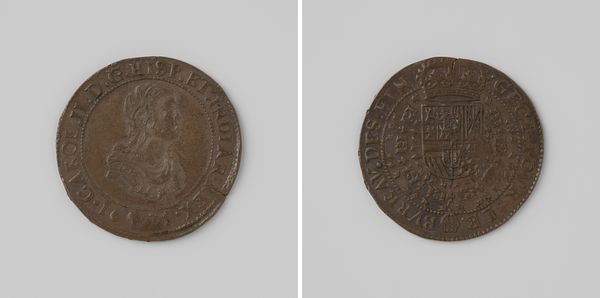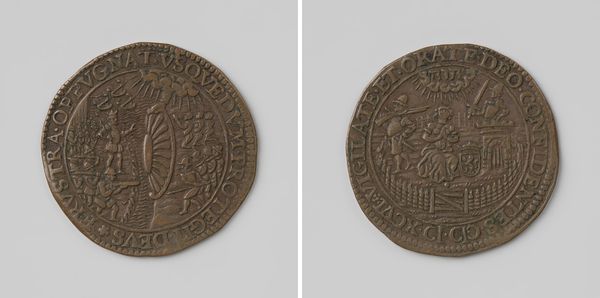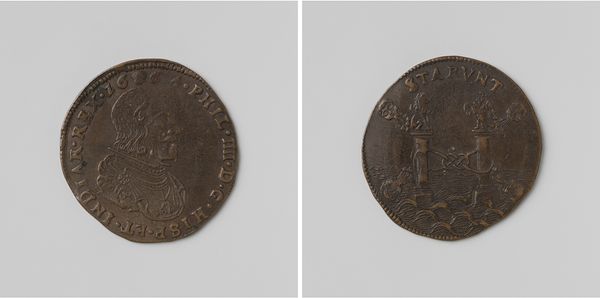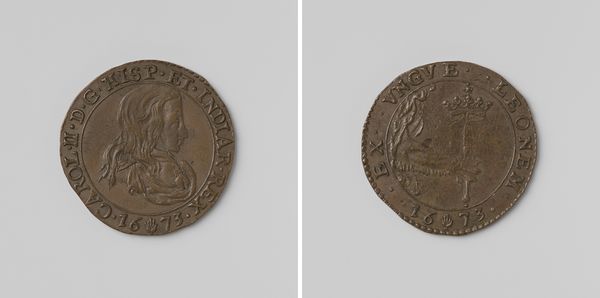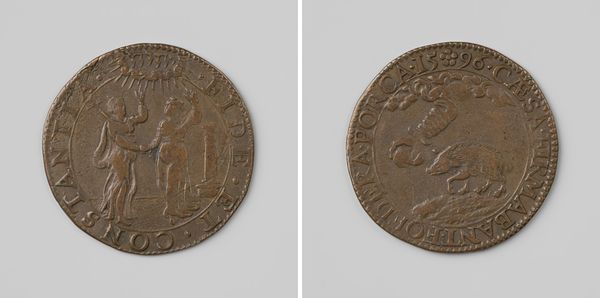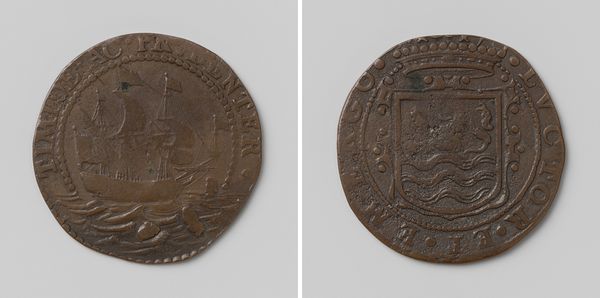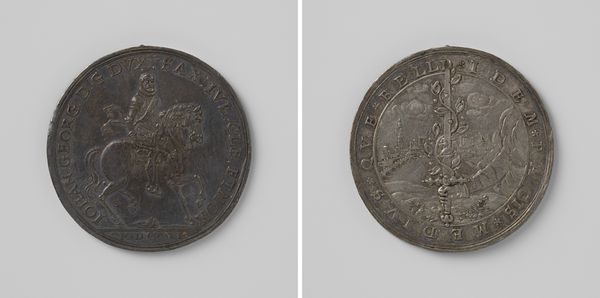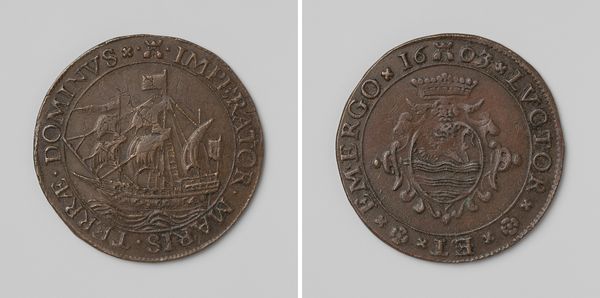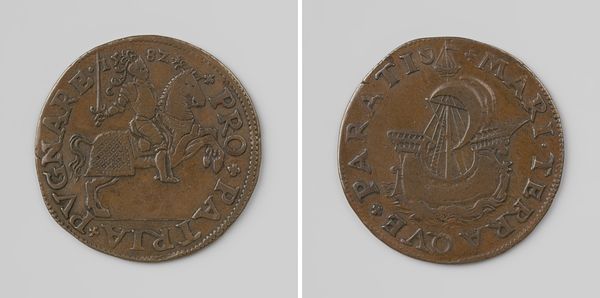
Storm aan de Hollandse en Zeeuwse kusten, rekenpenning van de Staten van Zeeland 1593
0:00
0:00
print, metal, sculpture, engraving
# print
#
metal
#
sculpture
#
landscape
#
11_renaissance
#
sculpture
#
history-painting
#
engraving
Dimensions: diameter 2.9 cm, weight 5.93 gr
Copyright: Rijks Museum: Open Domain
Curator: Let's turn our attention to this medal, "Storm aan de Hollandse en Zeeuwse kusten, rekenpenning van de Staten van Zeeland," dating back to 1593. It’s an engraving, most likely on metal. Editor: There's such intensity in this small object. It feels almost miniature, yet the scene is dramatic with those tumultuous waves and ships tossed about. Curator: The very choice of metal as the primary medium is significant. Consider the economic and social conditions of the time. Tokens such as this one would have played a tangible role in the material exchanges of the community, reflecting a culture deeply embedded in trade and naval power. Editor: Absolutely, and the imagery tells a story beyond mere transactions. The storm itself becomes a symbol, doesn’t it? Perhaps of adversity overcome, the resilience of the Dutch Republic against the Spanish, or even the raw power of nature. The ship being tossed evokes chaos. Curator: I think you are on to something about the connection between adversity and power, specifically naval power. The work's historical context really explains a lot, especially regarding 16th-century Dutch society. It’s also about understanding the skilled labor needed for engraving. The lines are so precise! Editor: Precisely! The symbolic charge rests there in that juxtaposition of a powerful symbol executed with painstaking detail. Do you see the crowns in the background? And perhaps lions in the waves. They’re definitely alluding to more than just rough seas, more like sovereign authority. Curator: I see your point. Together, all the different icons construct a story of triumph, of asserting Dutch power and independence using common materials and expert artisanry. Editor: I’d agree, and seeing how it marries artistry with such weighted symbolism invites us to look closer. I think the power lies in what these images have been used to represent for centuries after. Curator: What a powerful glimpse this medal provides into 16th-century history through an investigation of its means of production. Editor: And a vivid reminder of how images persist as powerful cultural carriers across generations.
Comments
No comments
Be the first to comment and join the conversation on the ultimate creative platform.
